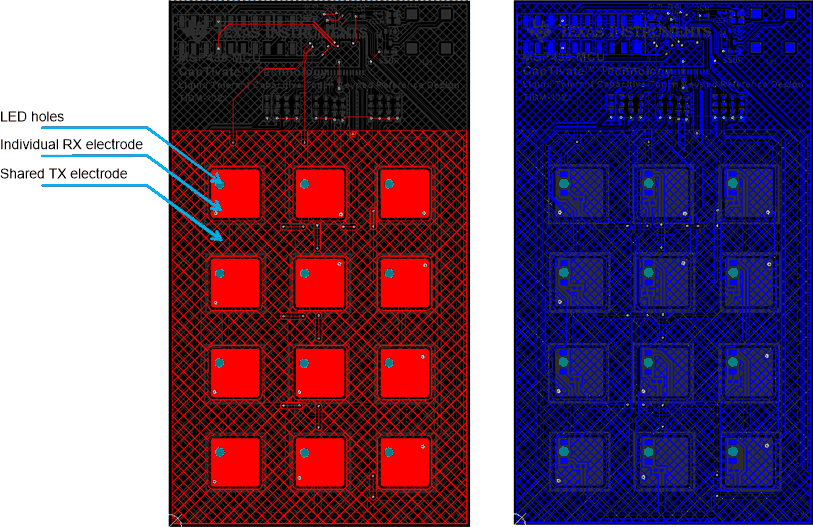TIDUE90 July 2018
- Description
- Resources
- Features
- Applications
- Design Images
- 1System Description
- 2System Overview
- 3Hardware, Software, Test Requirements, and Test Results
- 4Design Files
- 5Software Files
- 6Related Documentation
- 7About the Author
4.3.1 Layout Prints
Section 2.4.2 describes the mutual capacitance shielding and how to optimize the layout to work with continuous water flow. As Figure 28 shows, each individual mutual capacitance button is constructed with a individual solid RX electrode and a shared TX electrode that covers the touch area. The sensor structure is still the same as other mutual capacitance sensor, but the solid RX electrode shields the sensor from ground coupling on other layers. The shared TX electrode that covers the touch area also shields the sensor from ground coupling. For more information on the layout, download the design files. To download the layer plots, see the design files on the TIDM-1021 page.
 Figure 28. TIDM-1021 Layout Top Layer (Left), Bottom Layer (Right)
Figure 28. TIDM-1021 Layout Top Layer (Left), Bottom Layer (Right)